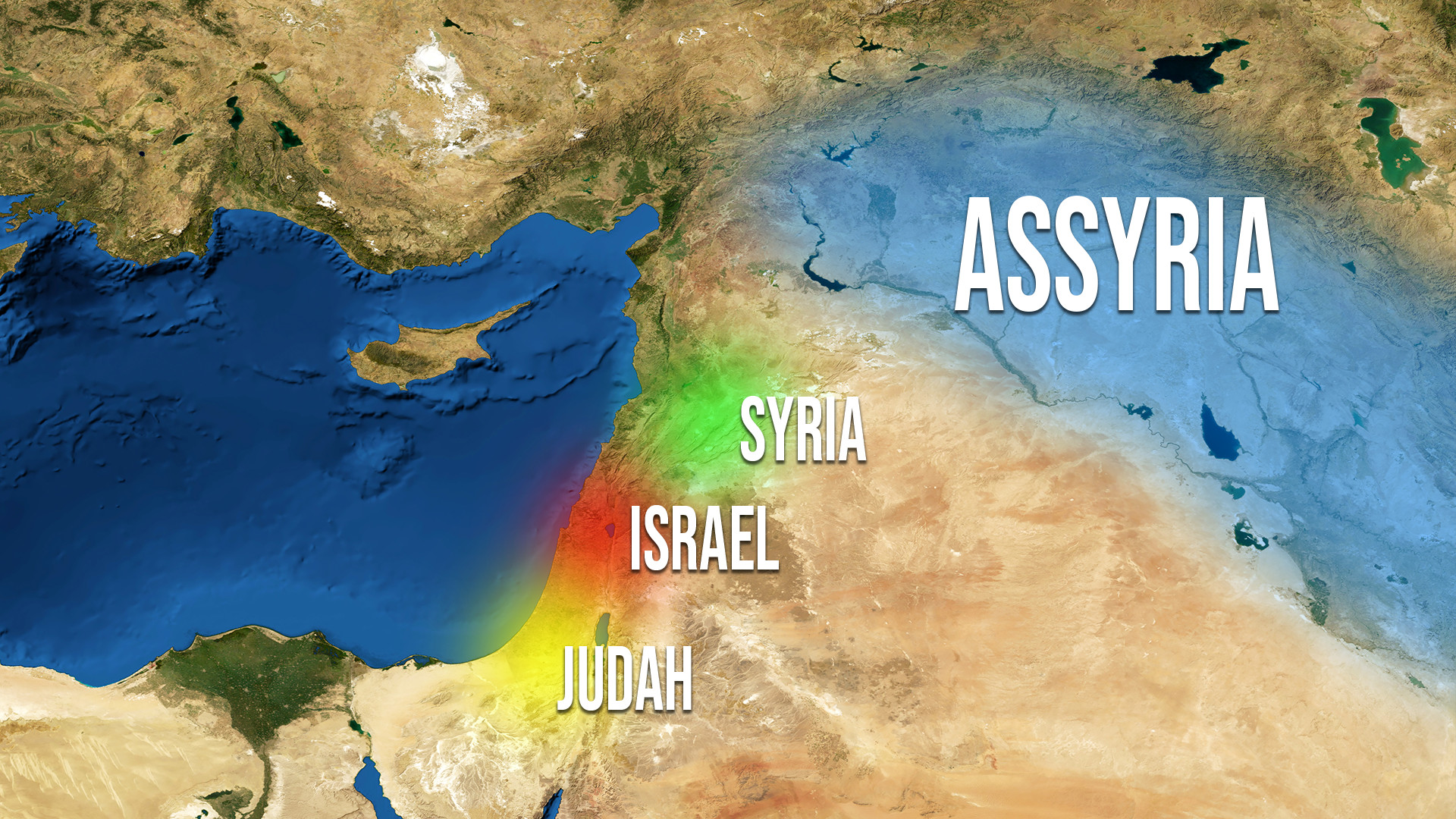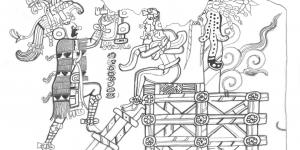You are here
Why Is Ancient Near Eastern History and Geography Helpful for Understanding Isaiah?

2 Nephi 25:6
The Know
The prophet Nephi declared that in a lengthy portion of 2 Nephi, he would “write more of the words of Isaiah, for my soul delighteth in his words” (2 Nephi 11:2). Following a twelve-chapter excerpt from Isaiah 2–14, Nephi also informed his readers that “Isaiah spake many things which were hard for many of my people to understand; for they know not concerning the manner of prophesying among the Jews” (2 Nephi 25:1).
Another stumbling block that prevented many Nephites from understanding Isaiah was a knowledge of the geography of the ancient Near East. Nephi could explain Isaiah to his people, he said, because “I know concerning the regions round about; and I have made mention unto my children concerning the judgments of God” (2 Nephi 25:6). As John Hilton III observed, “it is clear from Nephi’s words that understanding both the ‘regions round about’ (geography) and ‘judgments of God’ (possibly a reference to contemporary history) are essential to understanding Isaiah.”1 Furthermore, as observed by Donald W. Parry, “understanding aspects of the place-names may explain the meaning behind Isaiah's use of the name. At times, when Isaiah refers to a place-name, he makes an actual reference to that city, territory, or country; on other occasions, Isaiah attaches a symbolic meaning to the place-name.”2
Indeed, many of the Isaiah passages Nephi quoted describe Israel in close connection with its neighbors, including Syria, Assyria, and Babylon. Thus, to appreciate these prophecies from the 700s BC, it is useful to note how they speak of places and nations in the ancient Near East.3
Isaiah’s Song of the Vineyard
For example, many of the Isaiah passages cited by Nephi deal extensively with the punishments of the Northern Kingdom of Israel. One such prophecy is masterfully told through “a song of my beloved, touching his vineyard” (2 Nephi 15:1; Isaiah 5:1). This prophecy, like all of Isaiah’s writings, is written in poetic form, employing parallelism, symbolism, and other key Hebrew features that help readers understand what is happening in the text.
In this song, Israel is described as “a vineyard in a very fruitful hill,” which the Lord took great measures to protect: “He fenced it, and gathered out the stones thereof, and planted it with the choicest vine, and built a tower in the midst of it, and also made a wine-press therein” (2 Nephi 15:1–2). In other words, Israel was given the promised land, enjoyed the protection of the Lord, and was a covenant people under His care; however, they did not hold up to this covenant, for when the Lord “looked that it should bring forth grapes, … it brought forth wild grapes” (2 Nephi 15:2).
Because Israel had sinned and become corrupt, the Lord then promised to tear down the vineyard’s walls—that is, He would remove His protection from His people. Other prophetic judgments against Israel are centered on the sin of pride (for example, those who sought to get wealthy at the expense of the poor would be made poor, and the arrogant would be humbled when these things came upon them (2 Nephi 15:8–10, 15). Still others explicitly describe the punishments that would come upon men and women who focused too much on worldly things and did not care for the poor (see 2 Nephi 13).4
Assyrian Invasion
The biggest threat that both the Northern and Southern Kingdoms experienced in Isaiah’s day was the ever-expanding Neo-Assyrian Empire. This empire would soon grow to become the largest the world had ever seen up to this point in time, and the cruelty of the Assyrians was well known among all ancient Near Eastern cultures.5
According to Isaiah, Assyria, which dominated all of Israel’s northern borders, would be used as a tool in the hands of the Lord to punish Israel. As God had already removed His protection from the Northern Kingdom because of their covenant infidelity, the Assyrian armies would come as lions and a whirlwind to capture Israel (2 Nephi 15:26–30). Furthermore, in a lengthy prophecy against Israel, the Lord promised that the destruction would be so complete that they would not be able to rebuild (2 Nephi 19:8–20:11). Ultimately, these prophecies would be fulfilled in 722 BC, when Assyria scattered the ten tribes and repopulated the lands of the Northern Kingdom of Israel.
Syro-Ephraimite Conflict
Another key event behind two of the chapters that Nephi quotes is the Syro-Ephraimite conflict between 735 and 732 BC. Fearful of Assyria’s growing power, the small countries of Syria and the Northern Kingdom of Israel made an alliance (or confederacy) so that they could attempt to push the Assyrians back into the northeast when they inevitably expanded into Syria and Ephraim to their west and south.
Syria lay to the northeast of Judah, and even with Israel’s help Syria did not have the manpower to prevent an Assyrian invasion. As such, Israel and Syria wanted the Kingdom of Judah to join their alliance. When Ahaz, the king of Judah, refused, “Rezin, king of Syria, and Pekah the son of Remaliah, king of Israel, went up toward Jerusalem to war against it, but could not prevail against it” (2 Nephi 17:1). In so doing, Rezin and Pekah wanted to replace Ahaz with a puppet-king, “the son of Tabeal,” who would join them in their war against Assyria (2 Nephi 17:6). Obviously, these two armies attacking Judah’s northern border and capturing many Judahite cities would have been a great concern for Ahaz.
Throughout 2 Nephi 17 and 18 (Isaiah 7 and 8), Isaiah reassures Ahaz that the Syro-Ephraimite confederacy would fail, and Isaiah provided three signs by which Ahaz would know that the Lord would deliver Judah, defeat the Syrian and Ephraimite armies, and establish the Messiah through David’s lineage, as He had previously promised.6 However, still doubting that the Lord would defend Israel, Ahaz asked Assyria for help in defeating the two northern invaders. This ended the war in 732 BC but ultimately made Judah a vassal kingdom to the Assyrian Empire. This would bring disastrous results during the reign of Hezekiah, son of Ahaz, just as Isaiah had prophesied (2 Nephi 17:17–19).7
Destruction of Assyria
Even though Assyria had been the tool, up to this point, by which the Lord would punish the Northern Kingdom of Israel, Isaiah also makes it clear that Assyria was by no means righteous in the eyes of God. In fact, Assyria is described as being just as prideful as Israel, and they, too, would be punished for their pride (see 2 Nephi 20:12–34; 24:24–27). Why this punishment comes so much later than Israel’s may best be explained by the nature of the prophecies against foreign nations in Isaiah. As noted by David Rolph Seely, these prophecies—beginning with the oracle against Assyria—demonstrate not only that the Lord is over all nations of the earth but also that He will punish all His children fairly. Because Israel knew the Lord and were His covenant people, “Israel is held accountable for the more specific commandments contained in the covenant.”8 The Lord would still punish Assyria for its pride but would punish it only according to the knowledge they had.
This destruction would eventually come in 612 BC at the hands of the Babylonian Empire—a nation to the south of Assyria and to the east of Judah—which took possession of many of the lands formerly held by Assyria. This included the Kingdom of Judah, who had fought against Babylon shortly before the opening to the Book of Mormon.
Destruction of Babylon
Babylon would ultimately be the nation responsible for scattering the Southern Kingdom of Judah as a divine punishment for its pride, just as Assyria had previously scattered the Northern Kingdom. However, many of Isaiah’s prophecies about the Babylonian Empire, which was still under Assyrian control at the time Isaiah prophesied, also warn that because of their pride, Babylon would fall to the Medes (see 2 Nephi 23:17). The Medes, located even farther east of Babylon, would be one of the founding peoples of the Persian Empire, which would destroy the Neo-Babylonian Empire in 539 BC, allowing Israelites to return to their homeland as described in the books of Ezra and Nehemiah.
The Why
Much of the historical context behind these prophecies may initially paint a grim picture, as repeated armies from the north attack Israel and world empire after world empire conquers and is conquered. However, throughout these passages, Isaiah also prophesied of marvelous things that would have caused Nephi and his audience to rejoice in the Lord.
For example, while repeated oracles of the scattering of Israel are offered, they are typically followed by prophecies of the gathering of Israel as well. In fact, the promised blessings of a restoration are applicable not just to Israel but to all nations. As noted by Seely, “not only does the Lord render judgment on the whole earth but also restoration. The Lord loves and is mindful of all his children.”9 This leads to many prophecies of all God’s children accepting the gospel and serving Him. For example, Isaiah saw “when the mountain of the Lord’s house shall be established in the top of the mountains, and shall be exalted above the hills,” then “all nations shall flow unto it. And many people shall go and say, Come ye, and let us go up to the mountain of the Lord” (2 Nephi 12:2–3; emphasis added). These conditions would usher in a millennial peace throughout the entire world (see 2 Nephi 21:1–9).
Furthermore, Israel is promised that they will once again enjoy the presence of the Lord. After they have been washed clean of their sins, “the Lord will create upon every dwelling-place of mount Zion, and upon her assemblies, a cloud and smoke by day and the shining of a flaming fire by night,” just as He had when Israel journeyed in the wilderness (2 Nephi 14:5). Additional prophecies of the gathering of Israel are also found in close connection with prophecies of the scattering, thereby informing Israel that the end to their story was always meant to be one of glory, honor, repentance, and a renewal of the covenant blessings they received.10
Additional doctrinal truths found throughout these prophecies are also repeated multiple times throughout the Book of Mormon. For example, the pattern of Israel and Judah being scattered by other wicked nations would be repeated throughout Nephite history. Ultimately, Mormon would describe this succinctly: “The judgments of God will overtake the wicked; and it is by the wicked that the wicked are punished; for it is the wicked that stir up the hearts of the children of men unto bloodshed” (Mormon 4:5; emphasis added). Isaiah’s prophecies therefore showed the Nephites early on the same types of punishments that could await them should they break their covenants.
Furthermore, in each prophecy of destruction, pride is the underlying sin that led to the destructions foretold. As such, it is little surprise that Nephite prophets continually warned the people against pride—nor should it be surprising that Isaiah was one of the books of scripture they would use to do so.11
Ultimately, the book of Isaiah influenced Nephite prophets’ views on the restoration of Israel and the blessings promised them in the last days. Even as Isaiah prophesied in ways that would be beneficial to his own immediate audience, he was able to use historical events to share a vision of the future Day of the Lord, inspiring readers for centuries to come.
Further Reading
Donald W. Parry, Search Diligently the Words of Isaiah (Salt Lake City, UT: Deseret Book; Provo, UT: Religious Studies Center, Brigham Young University, 2023).
John Hilton III, “The Isaiah Map: An Approach to Teaching Isaiah,” Religious Educator 21, no. 1 (2020): 55–73.
Donald W. Parry and John W. Welch, eds., Isaiah in the Book of Mormon (Provo, UT: Foundation for Ancient Research and Mormon Studies [FARMS], 1998).
David Rolph Seely, “Nephi’s Use of Isaiah 2–14 in 2 Nephi 12–30,” in Isaiah in the Book of Mormon (Provo, UT: FARMS, 1998), 151–169.
John W. Welch, David Rolph Seely and Jo Ann H. Seely, eds., Glimpses of Lehi’s Jerusalem (Provo, UT: FARMS, 2004), 543–610.
- 1. John Hilton III, “The Isaiah Map: An Approach to Teaching Isaiah,” Religious Educator 21, no. 1 (2020): 59.
- 2. For a discussion on why Nephi lists a knowledge of the geography of the ancient Near East as a key to understanding Isaiah, see Donald W. Parry, “Nephi's Keys to Understanding Isaiah (2 Nephi 25:1-8),” in Isaiah in the Book of Mormon (Provo, UT: Foundation for Ancient Research and Mormon Studies, 1998), 58–61; quote on pp. 58, 60.
- 3. An excellent introduction to the prophet and book of Isaiah can also be found in Donald W. Parry, Search Diligently the Words of Isaiah (Salt Lake City, UT: Deseret Book; Provo, UT: Religious Studies Center, Brigham Young University, 2023). A translation of Isaiah targeted toward Latter-day Saints that can help clarify many Isaiah passages can also be found in Donald W. Parry, The Book of Isaiah: A New Translation (Preliminary Edition) (Springville, UT: Book of Mormon Central, 2022).
- 4. For more on this, see David Rolph Seely, “Nephi’s Use of Isaiah 2–14 in 2 Nephi 12–30,” in Isaiah in the Book of Mormon, 151–169.
- 5. For a brief introduction to the history of the Assyrian and Neo-Assyrian Empires, see A. Kirk Grayson, “History and Culture of Assyria,” in The Anchor Bible Dictionary, ed. David Noel Freedman et al., 6 vols. (New York, NY: Doubleday, 1992), 4:732–755.
- 6. See 2 Nephi 17:1, 14; 18:1–4.
- 7. This would happen as Assyria invaded Judah as described in 2 Kings 18–19. However, just as Isaiah prophesied, even though Assyria’s campaign would reach Jerusalem and Sennacherib would lay siege to the city, the Lord would deliver Jerusalem and the Kingdom of Judah from Assyria, causing the Assyrians to leave Judah.
- 8. David Rolph Seely, “The Lord Is Our Judge and King” (Isaiah 18–33), in Studies in Scripture, vol. 4, 1 Kings to Malachi, ed. Kent P. Jackson (Salt Lake City, UT: Deseret Book, 1993), 112.
- 9. Seely, “The Lord Is Our Judge and King,” 112.
- 10. See, for example, 2 Nephi 20:20–23; 21:10–22:6; 23:22–24:3.
- 11. See Book of Mormon Central, “How Does Nephi Use Isaiah to Teach Us to Avoid Pride? (2 Nephi 15:21; Isaiah 5:21),” KnoWhy 48 (March 7, 2016); also see Book of Mormon Central, “Why Did the “Pride Cycle” Destroy the Nephite Nation? (3 Nephi 6:10),” KnoWhy 195 (September 26, 2016) and Book of Mormon Central, “Why Did Moroni Speak of Pulling Down Pride? (Alma 51:17),” KnoWhy 430 (May 3, 2018) regarding pride in the Book of Mormon.
KnoWhy Citation
Related KnoWhys
Subscribe
Get the latest updates on Book of Mormon topics and research for free





